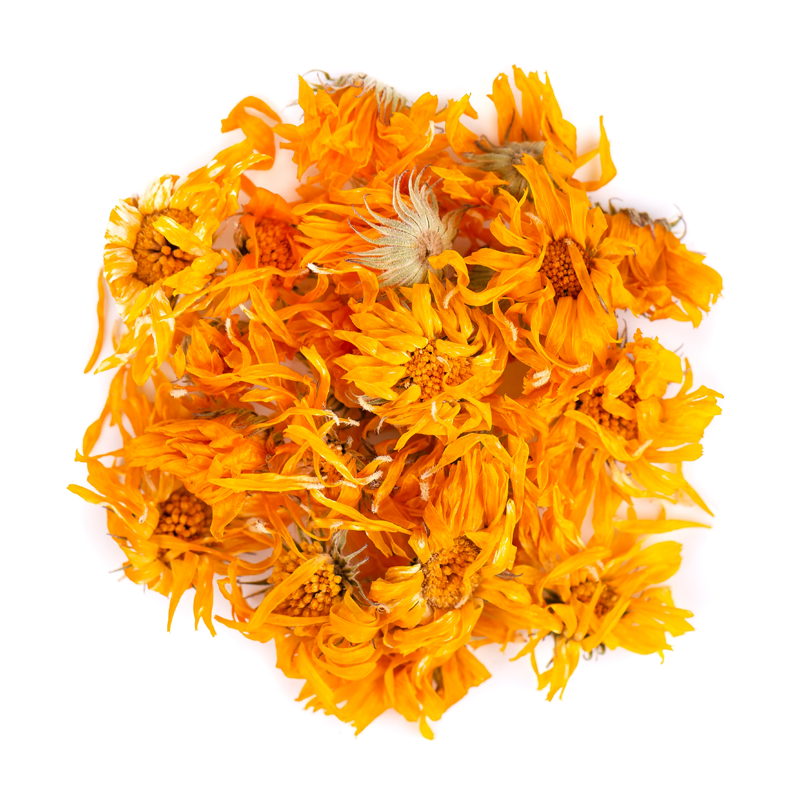Beautiful Calendula (Marigold) Buds & Petals
More about Calendula:
Calendula officinalis, commonly known as Marigold, stands out in our apothecary for its vibrant orange and yellow blooms, as well as its multifaceted medicinal properties. Esteemed for centuries in traditional medicine, Calendula is celebrated for its remarkable healing capabilities, particularly in wound care.
Its active components, including flavonoids like quercetin and triterpenoids such as faradiol, contribute to its potent effects. These properties make Calendula an invaluable ally in supporting healthy skin, promoting wound healing, and reducing occasional aches and pains.
Originating from the Mediterranean, Calendula officinalis has traversed the globe, cherished not only for its therapeutic virtues but also for its culinary and cosmetic applications. In an apothecary setting, Calendula is a symbol of nature's healing power, offering a natural remedy to various ailments while nurturing the skin with its soothing properties. Whether infused in oils, formulated into creams, or brewed as herbal teas, Calendula continues to be a cornerstone in holistic health and wellness practices, embodying the perfect blend of beauty and healing.
Know Your Ingredient: Calendula (Marigold)
| Latin Name | Calendula officinalis |
| Active Ingredients | Quercetin, isorhamnetin, Faradiol, carotenoids, saponins, volatile oils |
| Classification Secondary Metabolite | Flavonoids, Triterpenoids, Carotenoids |
| Flavor | Slightly bitter, aromatic |
| Common Use | Medicinal (topical skin solutions to reduce occasional aches and pains), culinary (edible flowers), cosmetics |
| Origin | Native to the Mediterranean region, now widely cultivated globally |


